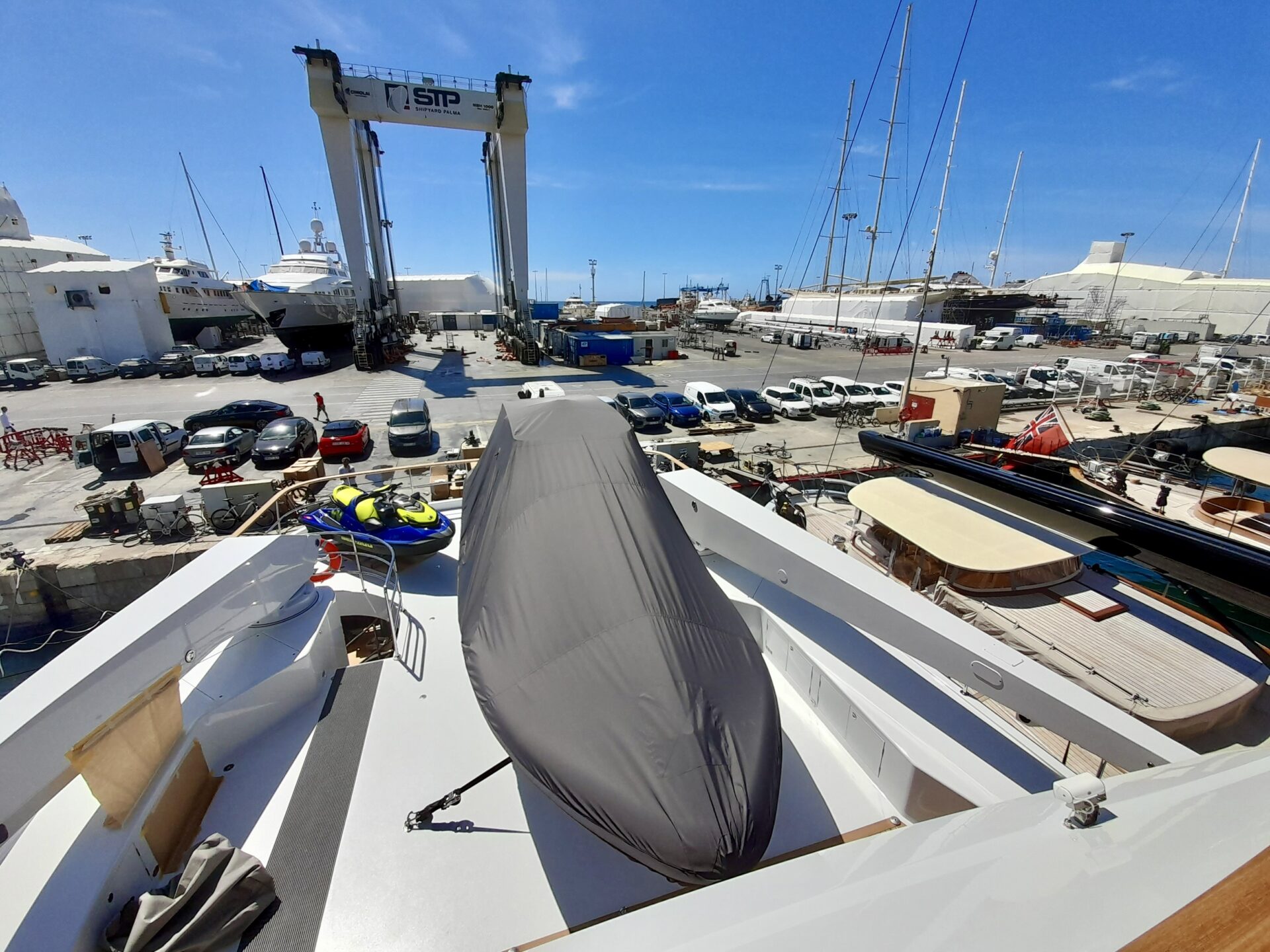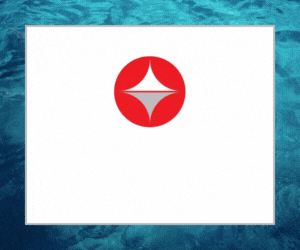Having worked in the Superyacht industry for over 20 years, the designs of Elite Yacht Covers (EYC) incorporate a great deal of thought, innovation and experience. A unique feature of Elite Yacht Covers is their ability to work with both traditional methods of hand templating, or pattern-making, and digitally with CAD software.
As a result, they are a ‘One-Stop Shop’ for making Superyacht covers, offering the most intricate designs. As one of the few companies that design and construct Tensile Awnings for yachts, EYC is one of the select few cover makers who are capable of doing so.

Aside from creating bespoke covers for Motor and Sailing Yachts, EYC also create covers for Superyacht Tenders, an equally as important aspect of any vessel. In this article, EYC’s Sales Director Paul Gray answers some burning questions from an ex-captain and current Superyacht Tender broker, on the ins and outs of creating and maintaining Tender covers. Read on to discover how to choose the correct cover for your vessel’s Tender, how to prevent damage, and more…
Would a cover outlast the tender before replacement, or is there a recommendation for how often you should get the covers replaced?
“A good fitting cover will keep the tender clear from scuffs and scratches, whilst on deck. The cover will improve the longevity and pristine look of a tender, due to marine grade fabrics’ ability to block harmful UV rays from attacking anything that is ‘undercover’. It’s important to note, that as a general rule, marine grade fabrics will block UV for around 10 years (this very much depends on the UV strength around the globe). After this time the UV inhibitors will fade away and the cover will still function, as in keeping the item clean and dry.”
How long does it take Elite Yacht Covers to produce and deliver a bespoke tender cover?
“Most of our yachts have an annual replacement itinerary and as such, we can forecast projects early on in the season.”
“With regards to damage replacement, we always expedite these for the yacht. Once costs are agreed, and if we do not already have the digital data or pattern template, we jump on the first convenient flight and spend the day template making or digitising, depending on the scope of work.”
“Once back to the loft, the CAD design usually takes a few long days before the cut files are sent for laser cutting, these are back with us, on average 7 days later, sometimes as little as 2 days later, ready for the manufacturing and shipping. I would generally expect to turn around an unplanned cover in 2 weeks from receipt of deposit, to being ready for shipping.”
More SYC: Vikal International, Pioneers Of Challenging Tender Designs
What are the best types of covers for different styles of tender?
For example, is a full cover underneath the tender good for a tender that is stored on the vessel’s deck, and what type of covers do you put on a tender that is stored inside (if any)?
“Great question! Yes indeed, we use an array of fabrics and carefully choose the best fabric for the job. Stamoid top is the Superyacht ‘go-to’ fabric, because of its wipe clean surface and great UV rating. However Serge Ferrari (manufacturer) has a variety of fabrics in their range. We recently made a figure hugging 58 foot tender cover for a Mega Yacht in Stamoid ‘Heavy’ due to the colossal wind loads on the bow of the Explorer yacht. For another yacht, with less crew to fit the cover, we used Stamoid ‘top’ for lightness and then used a skeleton of Dyneema ‘cables’ to provide a solid structure framework.
“For yachts such as Sailing Yacht A, they require covers that have an almost ‘self-cleaning’ surface and breathability and we use Stamoid ‘Smart’ which has a silicone outer surface. This material is the most expensive fabric that we use and it’s not without its limitations too. Because of its make up, when it is sewn with Tenara (PTFE 15-year warranty thread) it shows slight crinkling through the zig zag stitching.” (See Below)

In terms of cleaning the Stamoid range of fabrics, we urge the use of Serge Ferrari ‘Cleaner 500’.
How do you stop a cover from damaging the tender if the material on the inside is sometimes too abrasive?
It often occurred that crew noticed slight damage on a tender due to the inside material of the cover being too abrasive. Can you elaborate on why the materials EYC use mean this won’t occur?
“The key is to have a tailor-made cover, that does not allow for any movement in the canvas work. This does mean that the cover will require additional fitting time, and the crew should be prepared for this. We also use a lot of WeatherMax SG (surface guard). This has a flannel-like backing, that does not scuff of flatten polished surfaces or brightwork. WeatherMax is a breathable polyester, and is harder to keep clean, as such we always recommend purchasing the correct Ultramar cleaning kit when ordering.
You stated that you ‘jump on a flight’! How does being based in the UK effect your ability to service the Superyacht Fleet?
We have always worked by referral, between Captains, Officers and crew, such that our location in the UK isn’t really an issue. We also have a great collaboration with Loft Customs, who are based in Palma and we work well together to share production capacity to provide the very best product and to the best timeline.
Contact Information: Elite Yacht Covers
Email: enquiries@eliteyachtcovers.com
Telephone: +44 (0) 1206413494
Instagram: https://www.instagram.com/elitesuperyachtcovers
Facebook: www.facebook.com/eliteyachtcovers
Linkedin: https://www.linkedin.com/company/elite-superyacht-covers/
Elite Yacht Covers should be your go-to bespoke cover specialists.
Website: https://www.eliteyachtcovers.com
To keep up to date with the latest Superyacht Content News, click here.
Sign up to our Newsletter below:





.gif)












